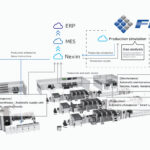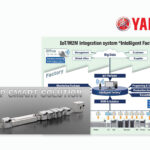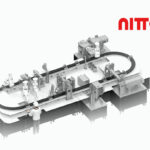ASIA ELECTRONICS INDUSTRYYOUR WINDOW TO SMART MANUFACTURING
Tokyo Weld Expands Fields to Meet New Demands
For the past years, Tokyo Weld, Co., Ltd. has created a niche in the manufacture of terminal coating machines, measurement inspection machines, and taping machines. Particularly, their applications are for discrete semiconductors, including diodes, transistors, and LEDs, and passive electronic components such as LCR. The business of the optical inspection machines, which is positioned as the third pillar, is also expanding.
In recent years, electronic components tend to be extremely miniaturized. Demand is increasing for inspection with high reliability and high quality as represented by automotive applications. For responding to such situation, the company is working on new business expansion with the MMxH Series to which the image processing technology and the transportation technology are applied.
In addition, the development for models equipped with artificial intelligence (AI) on TWA-4101/4102, which is the main model of the optical inspection machines of the company, is also progressing.
Higher Processing Capacities
The taping machine is responsible for the taping process in which electronic components are supplied to the surface mounter after inspection of their electrical characteristics. By inserting electronic components into reel tape pockets and winding the tape on a reel, the machine can stably supply electronic components.
Tokyo Weld calls it measuring and sorting machine because it performs taping after determining whether an electronic component is good or bad based on measurement of the electrical characteristics and optical inspection. The product lineup includes TWA-6606F and TWA-6604D, which have processing capacities of 5,000 pieces per minute, and TWA-6615 suitable for inductors.
In addition, the optical inspection machines TWA-4101 and 4102, which detect problems such as cracking, chips, and dirt in electronic components using image processing technology and determine defective products and non-defective products, have been introduced to the market. They inspect defective products of chips such as capacitors, inductors, and resistors based on the appearance on the six sides, front and back, top and bottom, and left and right. They have the industry’s fastest processing capacity of 12,000 pieces per minute.
A model equipped with AI has also been commercialized. Customers have highly evaluated the simplification of the work for constructing inspection algorithm, which requires specialized knowledge and a long learning period, and the effect of reducing mis-detection products. The misdetection (overkill) rate is the probability that a non-defective product is determined to be a defective product.
Based on the transfer technology cultivated so far, the company has developed and started selling multi-test handlers Multi-Module Test Handler (MMTH), the module type, and the Multi-Module Vision Handler (MMVH), the hanging transfer type. These machines are used for evaluating the performance of semiconductor devices to see if their electrical and optical functions work properly, and for determining whether they are good or bad.
The RF measurement taping machine MMVH003 compatible to fifth-generation (5G) mobile communication standard supports high frequency measurement and can perform appearance inspection with millimeter waves (27.5 to 29.5GHz).
Portfolio Details, Features
TWA-410x series
This series determines the quality of capacitors, inductors, diodes, etc., based on the image technology cultivated in measurement inspection machines for electronic parts. The company has already produced many six-sided optical inspection machines for multilayer ceramic capacitors. The series is positioned as a pillar of the business of the company, following the taping machines, measurement inspection machines, and terminal coating machines. In recent years, the company has been promoting the commercialization of a hybrid inspection system which incorporates an AI inspection algorithm into the existing inspection algorithm. One of the aims is to simplify the work to construct the inspection algorithm, which used to require a high degree of specialized knowledge and a long learning period. Another is to improve the inspection accuracy and to reduce the number of mis-detection products.
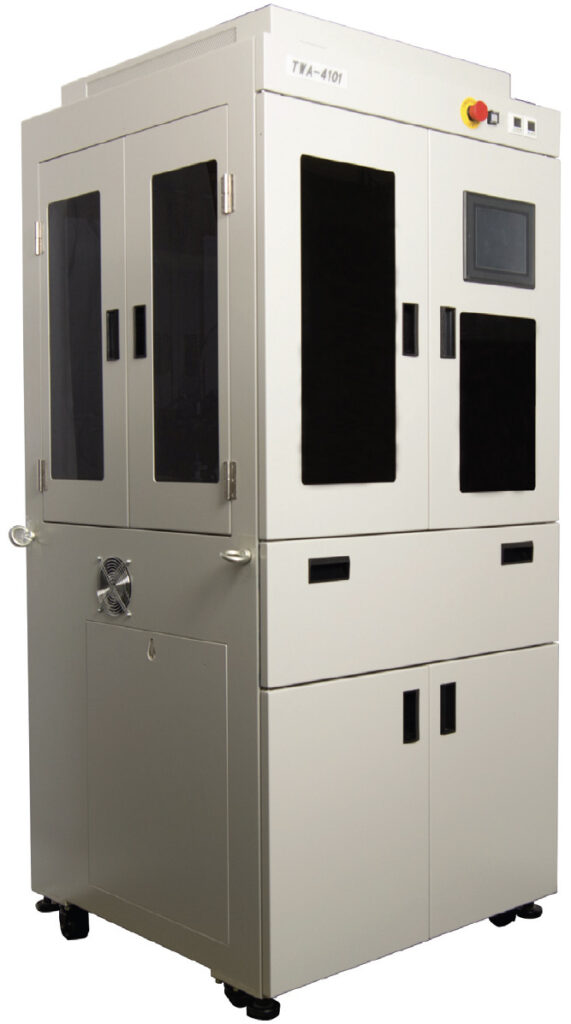
MMxH Series
This series is used for parts with different shapes and for devices and parts with medium or larger sizes. By modularizing the component units of each part of the equipment, it can inspect electronic parts of various sizes and shapes with flexible configuration changes. For example, the parts supply module can be replaced with various units including sheet type supply, parts feeder supply, tray supply, etc. Furthermore, the ejection module can be replaced with units such as multiple types of BIN boxes, alignment on trays, sheet attachment, taping, etc.
The series uses a nozzle transfer method in the center of the conveyance. This method can easily handle parts of various shapes. It has been adopted for the purpose of realizing the flexibility through the modularization of various units as mentioned above.
MMVH
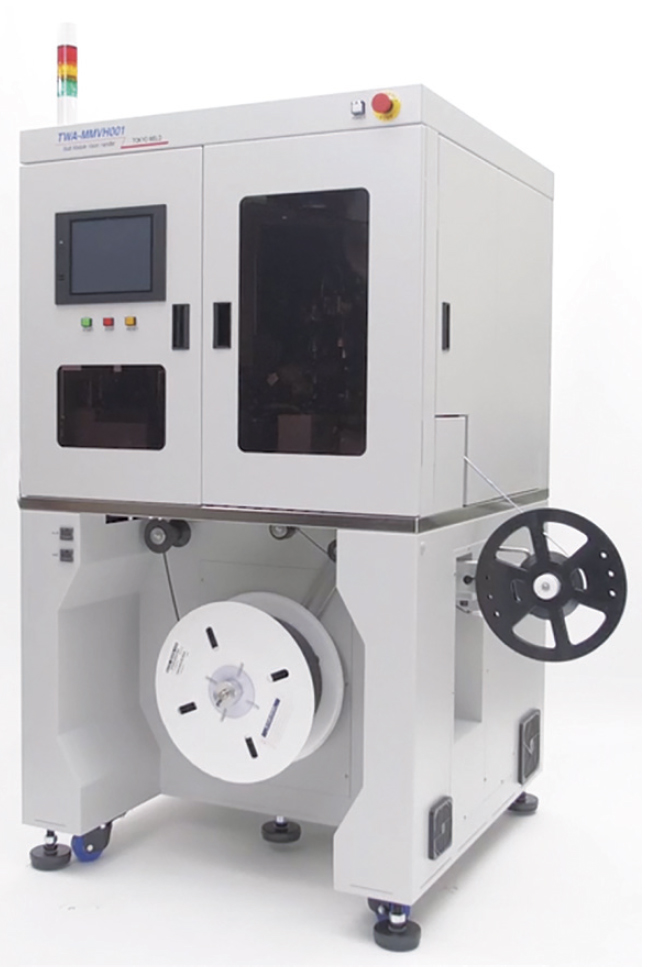
A new optical inspection machine named Multi-Module Vision Handler. By using the nozzle transfer method, it can meet the needs of preventing contacts between products during inspection and transportation of products with complex shapes.
MMTH

Tokyo Weld also has in its portfolio the MMTH multi-product compatible inspection machine. Each unit of supply, measurement and inspection, and ejection has been modularized, and a wide range of inspections are possible in various combinations.
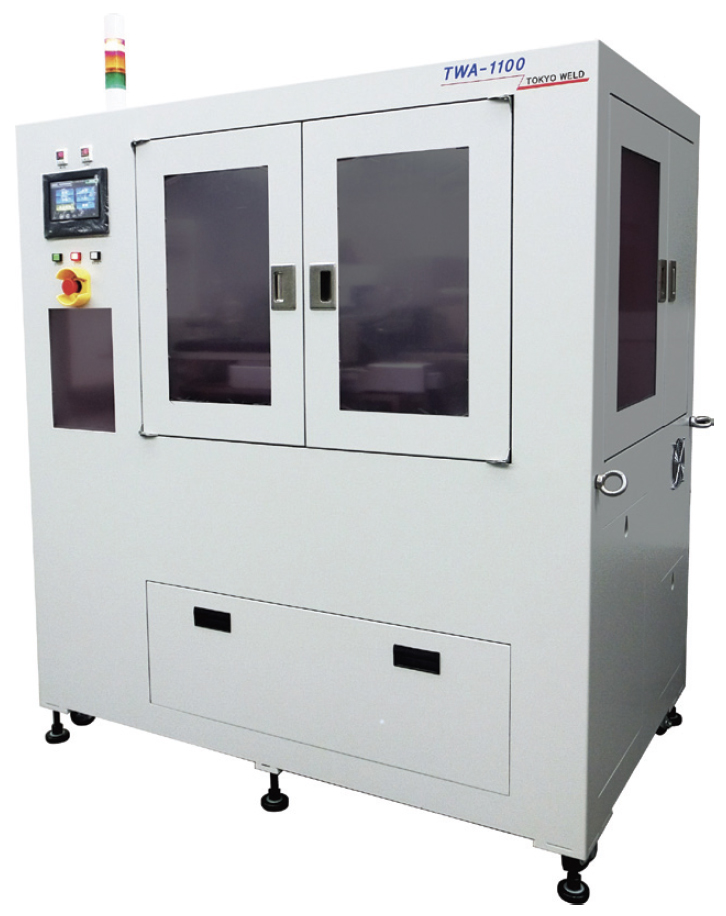
MMIH
A device for transfer and alignment of electronic components, named Multi-Module Insert Handler. It aligns electronic components and semiconductor elements, and transfers and stores them on a pallet. It contributes to labor saving and efficiency improvement of processes that were conventionally handled by mounters.

